Main Research theme
1. Novel nanostructures on semiconductor surfaces
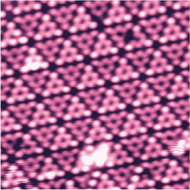
Epitaxial growth of metals on Si is studied by scanning probe microscopy at the atomic level. In particular, the initial reaction processes are in detail investigated together with first-principles calculations. Hydrogen interaction with such surfaces is also studied. Figure shows high-resolution image of Si(111) 7x7, where rest atoms in the second layer are clearly visible.
2. Carbon-based electrodes for Li-ion battery, fuel cell and artificial photosynthesis
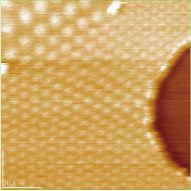
Carbon materials like graphite are focused for the future battery. The surface modification by nitrogen-doping or moire engineering is studied to enhance the battery efficiency. Figure shows the moire structure synthesized controllably using the transfer technique of graphene on HOPG.
3. Synthesis of carbon nanostructures for functional devices
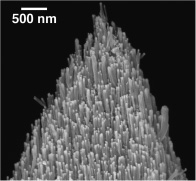
Carbon nanotube and graphene, etc. are synthesized using commercial or custom-made apparatus. Figure shows CNT growth on Si cantilever apex using plasma enhanced chemical vapor deposition. This CNT tip can be used for future SPM where characterization with higher spatial resolution is necessary. The combination of AFM and Raman, TERS, is also studied.
4. Fabrication and characterization of materials using “nano-robot” under three-dimensional SEM observation
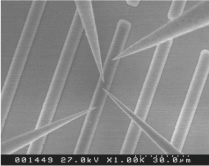
Nano-robot can be operated in the 3D-SEM system (Hitach 3500). The robot can measure the electric conductivity as well as the hardness of the materials. Figure shows the conductivity measurement using four-probe system.
5. Development of chemical sensors
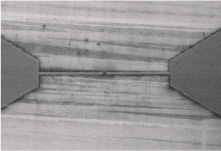
High sensitive chemical sensors are developing using carbon nanomaterials. In the figure, carbon nanotubes are bridged between the metal electrodes, which senses the conductivity difference upon gas molecule adsorption.
6. Fabrication of superhydrophobic surfaces using functional materials
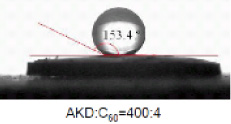
AKD surface is known to show superhydrophobicity. The transfer process of this surface is very important in terms of the technological application. Figure shows the control of hydrophobic surface by adding fullerene. In addition, we are now developing the unique and effective sponge for the removal of oil from sea.
7. Friction study for the long-life artificial hip-joints
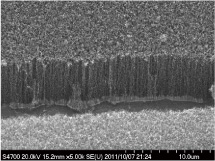
To extend the life time, surface frictional property of the artificial hip-joint should be controlled on an atomic scale. We try to coat the surface using carbon nanostructures to reduce the friction, as in the figure.








